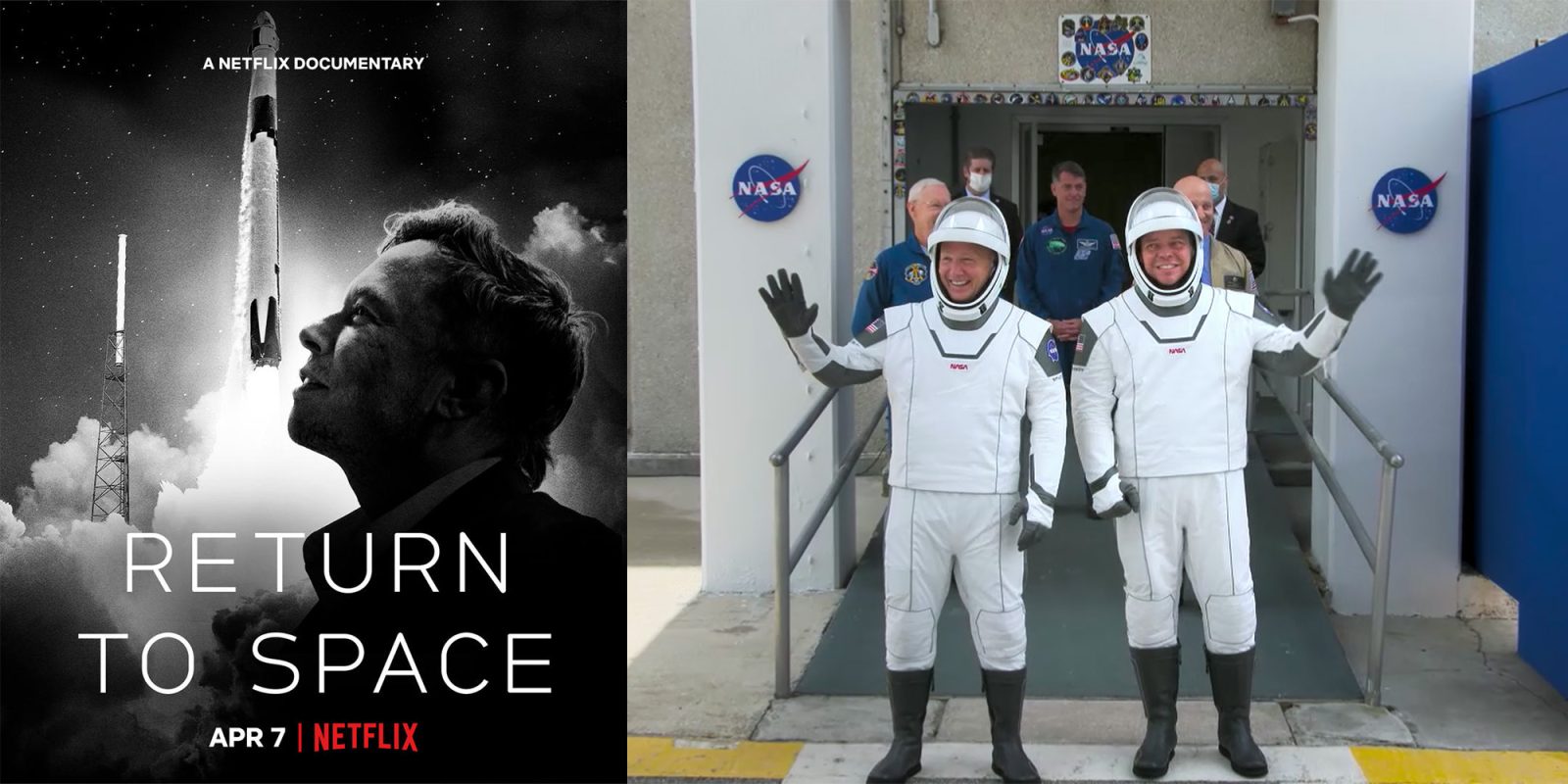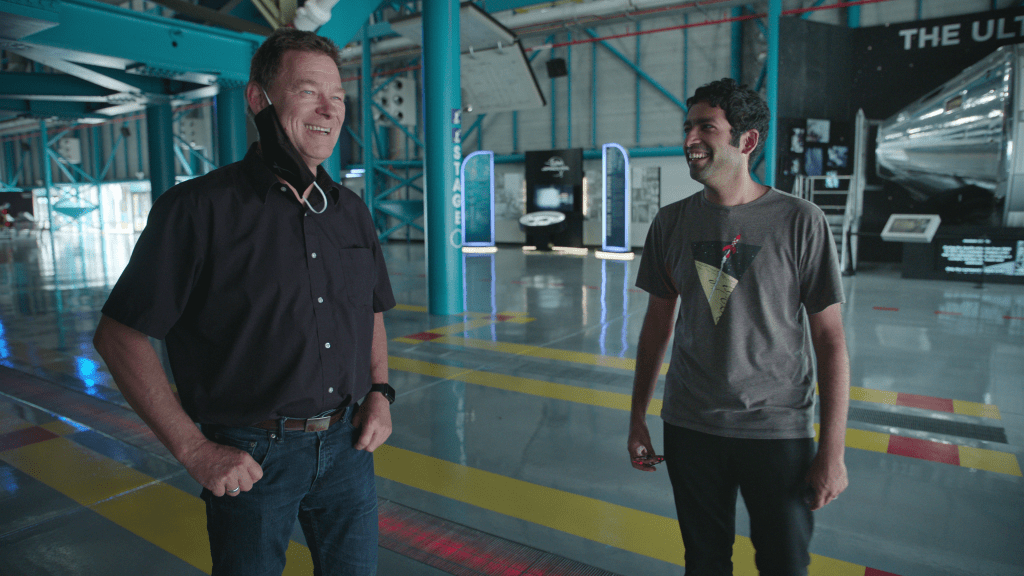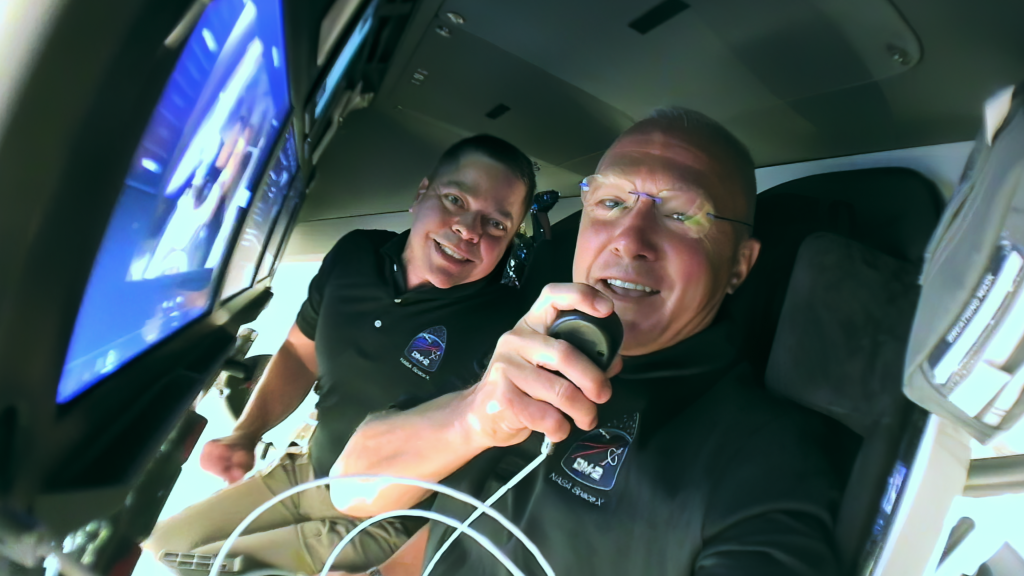
Netflix’s” Return To Space” documentary, available April 7, is a two-hour documentary detailing the journey of Elon Musk’s SpaceX and NASA to put Doug Hurley and Bob Behnken in orbit via a commercial rocket and spacecraft. We had a chance to speak with the directors of the film and Hurley about the trip.
Overall, we’ve enjoyed watching the documentary. There never seem to be enough films detailing modern spaceflight. “Return To Space” peels back the curtain of SpaceX during the lead-up to the launch of DM-2, the company’s first crewed flight of its Dragon spacecraft.
If you remember, the week of SpaceX’s DM-2 accrued national interest and coverage. While it might have been a few years, Elizabeth Chai Vasarhelyi and Jimmy Chin have put together one of the rawest looks at the modern SpaceX.
One of my favorite parts of “Return To Space” was that it didn’t just focus on Elon Musk and his crazy ideas. I mean, he’s in there and has some crazy ideas, but the directors, Jimmy and Chai, wanted to expand the focus to include those behind the scenes at SpaceX that made everything possible. My favorite addition was SpaceX’s former VP of Mission Assurance, Hans Koenigsmann. Hans was one of the first hires by Musk to build out SpaceX and was there from the failed Falcon 1s to the launch DM-2.

And then he retired at the end of this. So, I think there was a real feeling within the company, from Gwynne, everyone, they were like, yes, Hans needs to be remembered and recognized, and this was an opportunity to do that.
Elizabeth Chai Vasarhely
I was able to sit down with Jimmy and Chai to discuss why they took on this challenge to document SpaceX and NASA’s most important mission in the recent decade. They weren’t experts on spaceflight, but they knew the importance this launch would have on the space program and nation.
The film’s coverage expands to show SpaceX and NASA employees all over the company and agency. You get to meet the engineers who make everything happen: from launch to landing and recovery.
And half of them are like very extreme people, Doug was top gun, he’s like, one of the best test pilots around.
It was really special because it wasn’t only Elon that we were interested in at all. We wanted to understand the people who were there and that was fun.
Elizabeth Chai Vasarhely
Doug Hurley’s unique place in NASA spaceflight history
NASA astronaut Doug Hurley, who just recently retired from the agency after over 20 years on the job, holds a unique place in history no one else has. In 2011, Hurley was the pilot on STS-135, the final Space Shuttle flight, and then on DM-2 he commanded NASA’s first commercial mission. He is an important link between the two programs, being able to retrieve the American flag he left behind almost a decade before.
I mean you never expect that… but what is it? Luck is where preparation meets opportunity. I may not be the world’s best pilot, although my son would argue that point, but I worked really, really hard.
I love working with the team and it’s all about how the team performs, and I was lucky to end up flying on STS-135, but I was also in a position to be assigned.
It’s a huge honor to be part of any space flight, but then to be part of those particular ones. You know, some of it is just being in the right place, but it’s also performing when you’re asked to and being someone that the agency and your leadership can count on to do the right thing regardless.
Doug Hurley

Hurley did way more for the industry than just fly in its rockets. He also worked in Star City, Russia, to help train crews launching on Soyuz rockets to the ISS. Then Hurley joined the Commerical Crew Program to advise Boeing and SpaceX on building a crew-rated spacecraft.
Bob and I made a very conscious decision early on. It’s like, look we’re there to provide that operational, if you will, expertise on what it takes to get a vehicle to space, do the mission, come home safely, and help the very talented people at SpaceX.
We were there to sit and go, okay, we could probably do the mission with it like this, or let’s think about some other things we could do. Rather than just say, well, the way SpaceX does it is not the way NASA does it, so it’s wrong. And it paid huge dividends.
I asked Hurley what he hoped the average, non-space enthusiasts would get from the documentary when they see it show up on their feed.
It’s the human part of human spaceflight or any huge endeavor or huge effort. It really comes down to people and people working together, people cooperating, people working through challenges. In our case, we had a couple of explosions to deal with and work through. You know, we lost the Falcon 9 in 2016, and then we lost the DM-1 capsule.
Working through those challenges and the emotional toll that it takes and the persistence that you need to have to work through that, find a solution, and then get to the point where on May 30, 2020, we were looking at each other on the launch pad going we’re here. We finally did it.
Make sure to check out the new documentary on Netflix, “Return To Space.” It surely will change how you look at previous crewed launches and the upcoming ones.
FTC: We use income earning auto affiliate links. More.



Comments